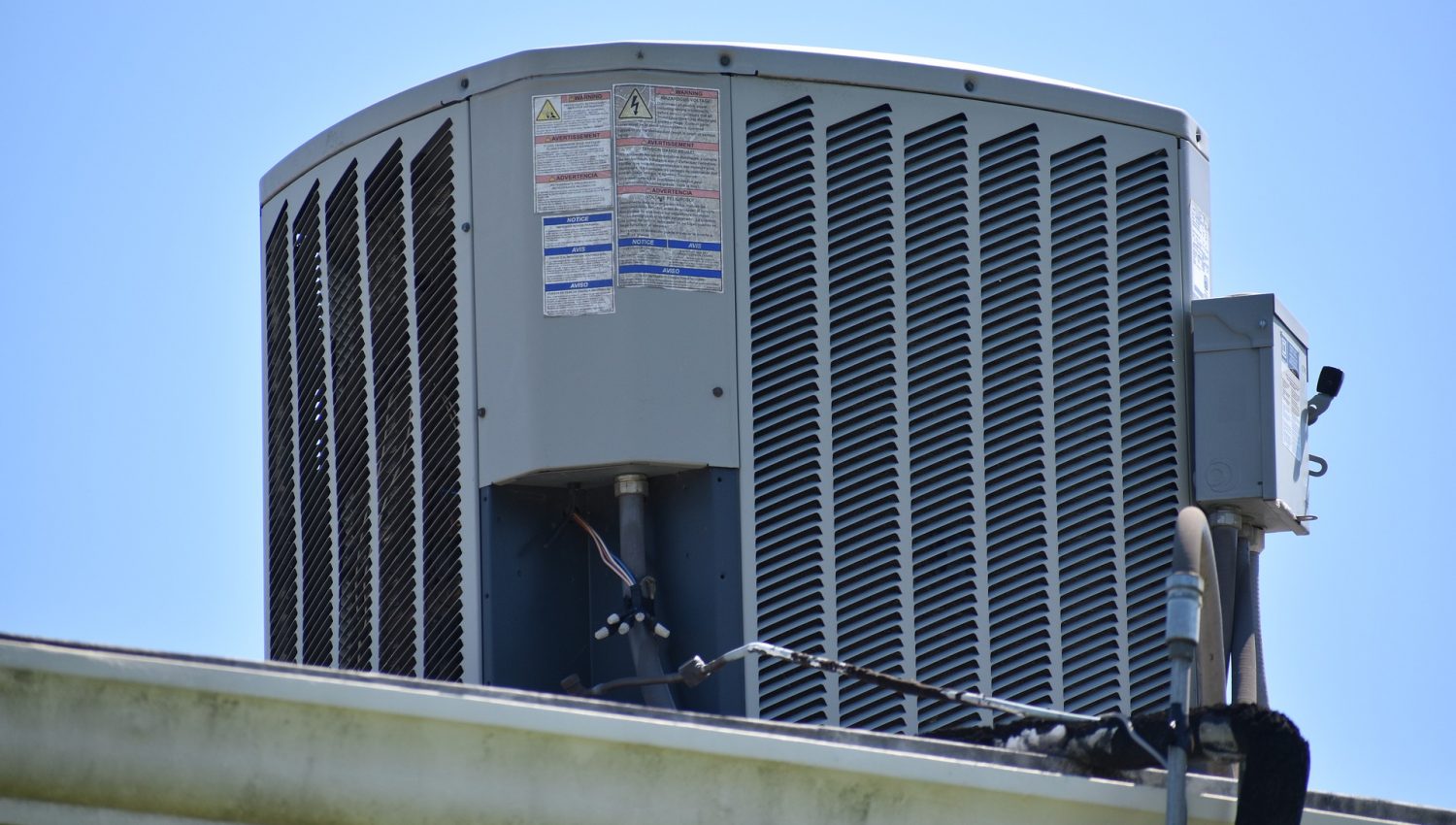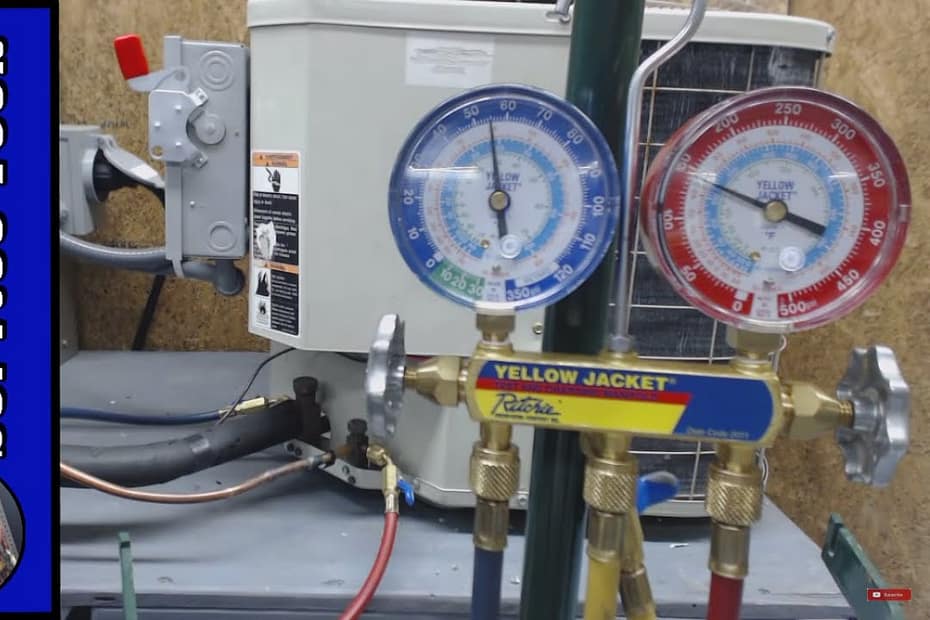To check the refrigerant level in your AC unit, you should contact a certified HVAC technician. They have the tools and expertise to accurately measure and adjust the refrigerant levels, ensuring that your AC unit operates efficiently.
Checking the refrigerant level is a crucial maintenance task that should be handled by professionals to prevent any potential issues or damage to your system. Having the correct refrigerant level in your AC unit is essential for its proper functioning.
This ensures efficient cooling and energy consumption, ultimately saving you money. Moreover, maintaining the optimal refrigerant level extends the lifespan of your AC unit and minimizes the risk of costly repairs. By regularly checking the refrigerant level, you can ensure that your AC system operates effectively, providing a comfortable indoor environment. If you suspect any issues with your AC unit, it’s important to address them promptly to avoid potential long-term damage while maintaining a comfortable, energy-efficient home.

Credit: andersonair.com
Importance Of Checking Refrigerant Level
To ensure optimal performance, regularly check the refrigerant level in your AC unit. Proper refrigerant levels are crucial for efficient cooling and preventing system malfunctions. Follow manufacturer guidelines or consult a professional for accurate measurement and maintenance.
Optimal Performance
Ensuring your AC unit has the proper refrigerant level is crucial for its optimal performance. When the refrigerant level is too low, the unit may struggle to cool your space efficiently, resulting in uneven temperatures and discomfort. On the other hand, if the refrigerant level is too high, it can cause the AC to overcool and create high humidity levels, leading to a clammy indoor environment. Checking and maintaining the refrigerant level is vital to ensure your AC unit works at its best.
Preventing Costly Repairs
Regularly checking the refrigerant level in your AC unit can help you avoid expensive repairs down the line. Low refrigerant levels can put a strain on the compressor, causing it to work harder and potentially leading to premature failure. Additionally, low refrigerant levels can result in frozen evaporator coils, which can damage the unit and require costly repairs. By keeping a close eye on the refrigerant level and addressing any imbalances promptly, you can prevent these avoidable expenses.
Moreover, knowing how to check the refrigerant level in your AC unit empowers you to catch any leaks early on. Small leaks can go unnoticed for months or even years, gradually reducing the refrigerant levels and impacting your AC’s performance. By regularly monitoring and adjusting the refrigerant level, you can detect and fix leaks before they become major problems, saving you from significant repair costs and potential system breakdowns.
Take Action To Ensure Optimal Performance And Prevent Costly Repairs

Credit: andersonair.com
Signs Of Low Refrigerant Level
Refrigerant is an essential component of your AC unit, and maintaining the proper level is crucial for its optimal performance. Here are some signs that can indicate a low refrigerant level in your AC unit.
Warm Air Circulating
If your AC unit is blowing warm air instead of cool air, it could be a sign of low refrigerant level. This occurs because insufficient refrigerant can hinder the unit’s ability to cool the air effectively.
Hissing Or Bubbling Sounds
Unusual sounds like hissing or bubbling coming from your AC unit can also indicate low refrigerant. These sounds are caused by the refrigerant leaking from the system, which can lead to a decrease in cooling performance.
Steps To Check Refrigerant Level
Checking the refrigerant level of your AC unit is crucial for the optimal performance of the system. Maintaining the correct refrigerant level ensures that your AC will continue to cool effectively and efficiently. In this section, we will outline the steps you need to take to check the refrigerant level in your AC unit.
Turn Off The Ac Unit
Before you begin checking the refrigerant level, turn off the AC unit to ensure your safety. It is important to work on the unit when it is not running to prevent any accidents or injuries.
Locate The Refrigerant Lines
Once the AC unit is turned off, locate the refrigerant lines. These are typically covered with insulation and can be found on the outside unit. The refrigerant lines are crucial for the proper functioning of the AC system, and locating them is the next step in checking the refrigerant level.
Use A Pressure Gauge
After locating the refrigerant lines, you will need to use a pressure gauge to check the refrigerant level. Connect the pressure gauge to the service valve on the refrigerant line and ensure it is securely attached. Then, observe the pressure reading on the gauge to determine if the refrigerant level is within the recommended range.
Common Mistakes To Avoid
Learn how to check the refrigerant level in your AC unit without making these common mistakes. Ensure effective cooling and avoid potential issues with these expert tips.
When it comes to maintaining your AC unit, checking the refrigerant level is crucial. However, it’s easy to fall into some common mistakes that can negatively impact the performance and efficiency of your unit. By understanding these mistakes and how to avoid them, you can ensure that your AC runs smoothly and efficiently.
Adding Refrigerant Without Proper Diagnosis
One common mistake that homeowners often make is adding refrigerant to their AC unit without properly diagnosing the issue. When the AC is not cooling effectively, it’s natural to assume that the refrigerant level is low and needs to be topped up. However, this assumption can be misleading and lead to unnecessary expenses.
Before adding refrigerant, it’s important to diagnose the actual problem. This can be done by checking for other potential issues such as dirty air filters, faulty thermostats, or blocked condenser coils. By addressing these underlying problems first, you can potentially resolve the cooling issues without having to add more refrigerant.
Adding refrigerant without a proper diagnosis not only wastes money but can also cause further damage to your AC unit. Too much refrigerant can put excess strain on the system, leading to compressor failure or even a complete breakdown. Therefore, it is essential to get a professional HVAC technician to diagnose the issue and add refrigerant if necessary.
Ignoring Leaks
Another mistake that homeowners often make is ignoring leaks in their AC unit. Leaks can occur in the refrigerant lines, coils, or even in the unit itself. Ignoring these leaks can have serious consequences and can lead to a loss of refrigerant and decrease in cooling efficiency.
When refrigerant leaks occur, the AC unit is unable to cool effectively and will work harder to maintain the desired temperature. This not only puts additional strain on the system but also leads to increased energy consumption and higher electricity bills.
To avoid this mistake, it’s important to regularly inspect your AC unit for any signs of leaks. Look out for oily spots or stains near the refrigerant lines and coils. If you notice any leaks, it’s crucial to get them repaired by a qualified technician as soon as possible.
In conclusion, adding refrigerant without a proper diagnosis and ignoring leaks in your AC unit are two common mistakes that can negatively impact its performance and efficiency. By avoiding these mistakes and addressing any issues promptly, you can ensure that your AC unit works effectively, providing you with cool and comfortable indoor air.
When To Seek Professional Help
Persistent Refrigerant Issues
If you continue to experience low refrigerant levels despite refills, consult a professional for a thorough examination.
Unusual Smells Or Sounds
Strange odors or noises from your AC unit can indicate refrigerant leakage. Seek professional assistance promptly.

Credit: m.youtube.com
Frequently Asked Questions Of How To Check Refrigerant Level In Ac Unit
How Do I Know If My Ac Is Low On Refrigerant?
You can tell if your AC is low on refrigerant if the airflow is weak, the air isn’t cold enough, or you hear hissing noises. Also, check for ice buildup on the refrigerant line. If you notice these signs, it’s likely time to recharge your AC system with refrigerant.
How Do I Check The Refrigerant Level In My Home Ac Unit?
To check the refrigerant level in your home AC unit, hire a professional HVAC technician. They use a gauge to measure the refrigerant pressure and ensure it’s at the correct level for optimal performance. Regular maintenance is essential for keeping your AC running efficiently.
How Do I Add Refrigerant To My Ac Unit?
To add refrigerant to your AC unit, follow these steps: 1. Turn off the unit. 2. Locate the service valve. 3. Attach the refrigerant can to the valve. 4. Slowly release the refrigerant into the system. 5. Monitor the pressure as you add the refrigerant.
Always consult a professional if unsure.
How Do You Know How Much Refrigerant Is Put Into An Ac System?
To determine refrigerant amount in AC system, use pressure gauges and refer to manufacturer’s specifications.
Conclusion
To effectively maintain the performance of your AC unit, regularly checking the refrigerant level is crucial. By following the steps outlined in this blog post, you can ensure that your unit is operating efficiently and avoid potential malfunctioning. Remember, maintaining optimal refrigerant levels not only extends the lifespan of your AC system but also contributes to energy savings.
Keep your AC unit running smoothly and enjoy a comfortable environment all year round.
